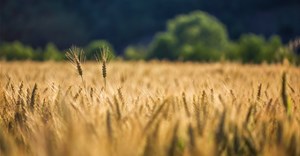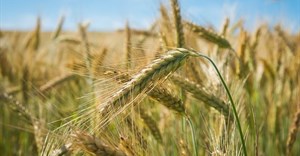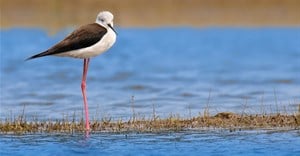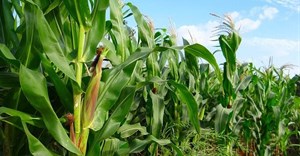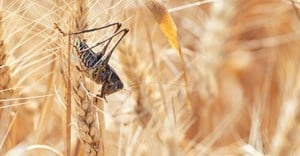Climate-friendly farming strategies can improve the land and generate income for farmers

As a scientist focusing on agricultural land use and adviser to several farm organizations, I have the privilege of working alongside farmers who have figured out how to do just that. I am enthusiastic about farmer-led solutions to climate change. What does this look like?
USDA is committed to working with farmers and landowners to make climate smart practices work for you in a market-oriented way — a way that creates new streams of income, a cleaner energy future and a biobased manufacturing revolution. #EarthDay pic.twitter.com/PWHg9jGtYr
— Secretary Tom Vilsack (@SecVilsack) April 22, 2021
Restore strips of native plants around farm fields
Plants remove carbon from the atmosphere as they grow, and soil can soak up carbon and store it. These abilities are key to climate solutions that crop farmers can readily deploy today.
Seeding narrow strips of land within and around crop fields with native plants is an effective and affordable way to make farming more climate-friendly. Iowa State University’s STRIPS Project has shown that this technique reduces erosion and nutrient loss from soil and supports birds and insects.
Prairie strips can reduce emissions of nitrous oxide, a greenhouse gas 298 times more potent than carbon dioxide. Nitrous oxide emissions vary widely across agricultural landscapes and over time, but the largest contributions are associated with poorly drained croplands.
Nitrous oxide forms under anaerobic conditions – environments without oxygen, such as low-lying wet areas of farm fields, where it is produced by soil microbes. The easiest way to keep it from forming is to avoid fertilizing these areas, which amounts to feeding the microbes.
Prairie strips help reduce nitrous oxide emissions by soaking up nitrogen fertilizer that runs off of adjacent cropland. They also can store carbon in soil in two ways: by trapping sediment moving down slopes, and by removing carbon dioxide from the atmosphere through photosynthesis and storing this carbon in plant roots and soil.
Prairie strips are among the least expensive conservation practices available to farmers. This is especially true if the land they occupy is enrolled in the Conservation Reserve Program, which pays farmers to take environmentally sensitive land out of production and conserve it for other purposes.
Installing prairie strips has qualified for Conservation Reserve Program funding since 2019. Colleagues and I estimate that via this route, they cost US$8 yearly per acre of cropland treated. A recent survey found that about half of Iowa farmers were willing to install prairie strips if they could access federal funds.
On April 21, 2021, Agriculture Secretary Tom Vilsack announced that the agency will expand Conservation Reserve Program enrollment and offer higher payment rates for participating. The department is also creating a new Climate-Smart Practice Incentive to promote strategies that sequester carbon and reduce greenhouse gas emissions. I hope this measure will promote national awareness of prairie strips, which today are known mainly in Iowa and neighboring states.
Turn soggy spots into wetlands
Since nitrous oxide emissions come mainly from wet zones, letting these areas remain as wetlands is another climate-smart strategy. Soggy areas tend to yield poorly in most years, and farmers rarely recoup their investment in cropping them. However, wetlands can be troublesome to farm around, which is why many farmers try to drain and farm through them.
But healthy wetlands also provide benefits: They sequester carbon, store and filter water and provide crucial habitat for mammals, birds, frogs and other organisms. The Agriculture Department’s new Climate-Smart Practice Incentive will support wetland restoration on agricultural lands.
Another USDA initiative, the Farmable Wetland Program, pays farmers to take previously farmed wetlands and buffer areas out of production for 10 or more years. Enrollment is currently capped at 1 million acres. A climate-smart agricultural policy could expand the program by removing the acreage cap and boosting incentive payments.
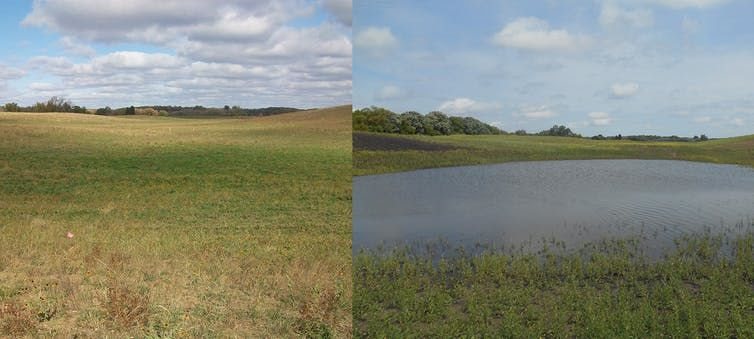
Promote perennial crops, especially grasses
All crops are not equal when it comes to mitigating climate change and conserving the environment. Perennials – including various types of grasses, shrubs and trees – provide more ecological benefits than annual crops like corn, wheat and soybeans. But they receive less government support.
Just like annual garden plants, annual crops must be replanted every year. Perennial crops live for multiple seasons, so raising them requires fewer climate-warming inputs, such as fertiliser and fuel to power tractors. These crops develop deep roots that soak up water in soggy spots and help stabilize soil on sloping land.
Many fruits, vegetables and forage crops are perennials. Examples include apples, alfalfa, grapes and asparagus. Researchers are working to develop perennial versions of grains, legumes and oilseeds such as sunflowers.
There are many opportunities to expand cultivation of perennial crops. Grasses and forbs – flowering plants with stems and leaves, such as bee balm – are less expensive to establish and grow than woody crops like willow, and offer farmers more management flexibility.
The grasses can ultimately be harvested and processed in biodigesters – devices that break down organic materials to produce energy – along with manure or food waste. This cycle will yield electricity or biomethane from renewable sources that can displace fossil-based energy sources on or off of farms. It also will produce liquid and solid materials that can be used as organic fertilizers, along with other valuable products.
Replacing fertiliser made from synthetic nitrogen is important for the climate because making it consumes enormous quantities of natural gas and releases methane into the atmosphere. Methane is another powerful greenhouse gas, 25 times more potent than carbon dioxide.
Biodigestion is widely used in Europe but underdeveloped in the U.S. We expect that the value chain we’re creating will embed it in a larger cycle that creates a market for protective perennial crops, reduces fossil fuel use and returns carbon to the soil.
The Agriculture Department’s Rural Energy for America Program provides grants and loans that can be used to support biodigester construction on farms. Expanding this program, which currently is funded at $50 million yearly through 2022, and making biodigesters a priority, is another climate-friendly opportunity.
When I think of climate-smart agriculture, I picture farmlands with lots of perennial vegetation smartly integrated as prairie strips, wetlands and crops. Federal policies and programs that can make such landscapes a reality are already in place. With concerted efforts and investments, they could be expanded to achieve a pace and scale that will help address climate change.
This article is republished from The Conversation under a Creative Commons license. Read the original article.![]()
Source: The Conversation Africa

The Conversation Africa is an independent source of news and views from the academic and research community. Its aim is to promote better understanding of current affairs and complex issues, and allow for a better quality of public discourse and conversation.
Go to: https://theconversation.com/africa







